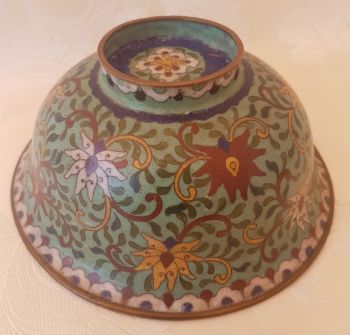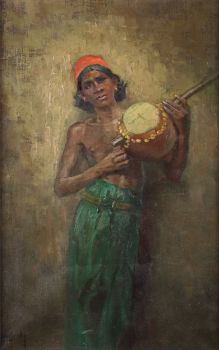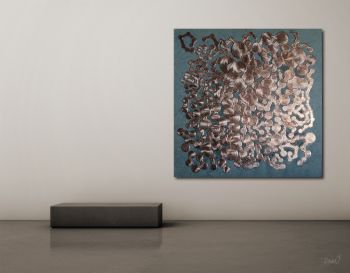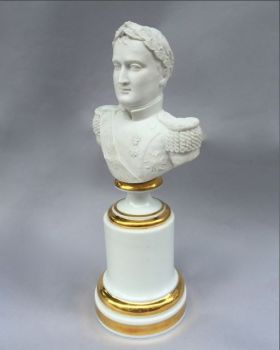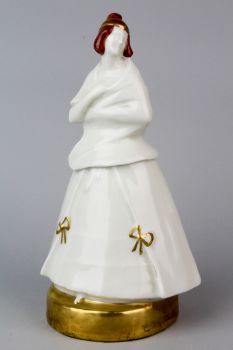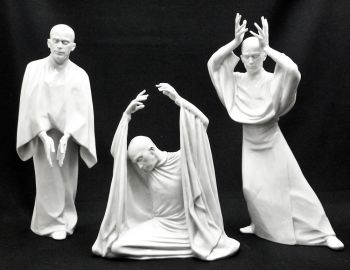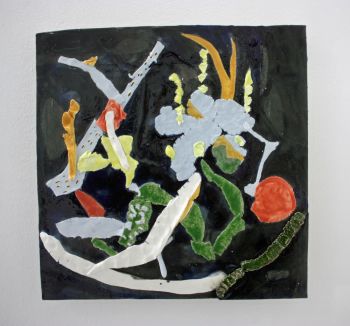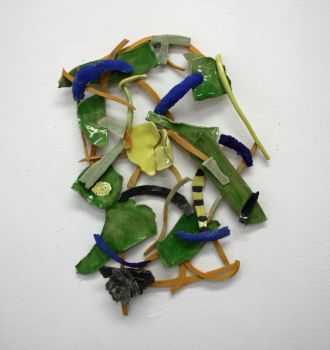Two Chinese porcelain famille rose Mancerina plates, Qianlong Qing dynasty c. 1770 Chinese export di 1770
Artista Sconosciuto
PorcellanaPorcellana cinese
3.50 ⨯ 21.50 ⨯ 21.60 cm
ConditionGood
Prezzo su richiesta
Menken Works of Art
- A proposito di opere d'arteA pair of two famille rose trembleuse stands or chocolate cup holders for the Spanish and Mexican market, ‘mancerina’.
China, Qianlong period, c. 1770.
The mancerina of molded scallop shell form, on raised feet with refined overglaze hand painted famille rose decorations.
These ornate, unusually large saucers with a cupholder in the centre (which are missing in this case) were special pieces made for serving chocolate. It was invented by a Spanish grandee, in Mexico, in the seventeenth century and was named after the man who had invented it, Pedro de Toledo, 1st Marquis of Mancera, who served as Viceroy of Peru from 1639 to 1648.
Called mancerina, the cup holders were designed to catch spilled liquid and help the drinker avoid burning their fingers on a hot cup. The tray could in turn be used to hold pastries. Mancerinas were first made in silver in colonial Mexico and Spain and later copied in ceramics, with models of these pieces sent to Chinese porcelain workshops.
In conclusion, these mancerina are a testament to colonial history and mutual influence between cultures connected via sea trade routes from West to East.
Dimensions (few mm varying in size):
Height 3.5 cm, width 21.5 cm, depth 21.6 cm.
Condition (DM for more pictures):
The first plate with two chips under the rim, the bottom with a star-shaped hairline in the middle (not showing on the top), the raised rim in the center on the top with a small scuff, furthermore in very good condition.
The second plate with a star-shaped hairline in the middle (also showing on the top) and a small hairline to the central border.
Identical mancerina with matching cup can be found in the following museum collections:
-Museo Nacional de Historia, Mexico City, illustrated by M. Priyadarshini, Chinese Porcelain in Colonial Mexico, p. 123, fig. 4.9.
-Carnegie Museum of Art, Pittsburgh, United States, accession no. 70.59.1
-Museum Amparo Puebla de Zaragoza, Mexico
-Museo Nacional del Virreinato, Tepotzotlán, Mexico
-Asian Civilisations Museum, 2022-00043
For a lecture in Spanish by Museo Amparo about this specific mancerina, click on the following link:
https://www.youtube.com/watch?app=desktop&v=T2exETvFg00
Also see:
https://www.youtube.com/watch?v=kJUmINIE1VQ
Inv. No: MW8 - A proposito di opere artista
Può succedere che un artista o un creatore sia sconosciuto.
Alcune opere non sono determinate da chi sono state realizzate o sono state realizzate da (un gruppo di) artigiani. Esempi sono statue dell'antichità, mobili, specchi o firme non chiare o leggibili ma anche alcune opere non sono affatto firmate.
Inoltre puoi trovare la seguente descrizione:
•"Attribuito a …." A loro avviso probabilmente opera dell'artista, almeno in parte
•“Studio di ….” o “Officina di” A loro avviso un'opera eseguita nello studio o nella bottega dell'artista, eventualmente sotto la sua supervisione
•“Cerchio di…” A loro avviso un'opera del periodo dell'artista che mostra la sua influenza, strettamente legata all'artista ma non necessariamente al suo allievo
•"Stile di..." o "Seguace di..." A loro avviso un'opera eseguita nello stile dell'artista ma non necessariamente da un allievo; può essere contemporaneo o quasi contemporaneo
•“Modalità di…” A loro avviso un'opera nello stile dell'artista ma di epoca successiva
•"Dopo …." A loro avviso una copia (di qualsiasi data) di un'opera dell'artista
•“Firmato…”, “Datato…” o “Iscritto” A loro avviso l'opera è stata firmata/datata/inscritta dall'artista. L'aggiunta di un punto interrogativo indica un elemento di dubbio
•"Con firma....", "Con data...", "Con iscrizione..." o “Riporta firma/data/iscrizione” a loro avviso la firma/data/iscrizione è stata aggiunta da qualcuno diverso dall'artista
Sei interessato ad acquistare questa opera d'arte?
Artwork details
Related artworks
Artista Sconosciuto
Chinese carnelian agate vase or brush washer, 18th/19th century, Qing dynasty1720 - 1820
Prezzo su richiestaMenken Works of Art
Artista Sconosciuto
A Dutch colonial Indonesian betel box with gold mounts1750 - 1800
Prezzo su richiestaZebregs & Röell - Fine Art - Antiques
1 - 4 / 12HUGO VILFRED VON PEDERSEN
Gadesanger fra Singapore (Musician from Singapore)1870 - 1959
Prezzo su richiestaZebregs & Röell - Fine Art - Antiques
Artista Sconosciuto
A blue and white Romance of the Three Kingdoms charger, Kangxi period (1661-1722)1661 - 1722
Prezzo su richiestaMenken Works of Art
Artista Sconosciuto
A Chinese porcelain blue and white 'Mantou Xin' bowl, Kangxi period (1661-1722)1700 - 1720
Prezzo su richiestaMenken Works of Art
Artista Sconosciuto
Chinese carnelian agate vase or brush washer, 18th/19th century, Qing dynasty1720 - 1820
Prezzo su richiestaMenken Works of Art
1 - 4 / 13Artista Sconosciuto
A blue and white Romance of the Three Kingdoms charger, Kangxi period (1661-1722)1661 - 1722
Prezzo su richiestaMenken Works of Art
Artista Sconosciuto
Four famille rose ‘Wu Shuang Pu’ wine cups, Guangxu mark and period (1875-1908)1875 - 1908
Prezzo su richiestaMenken Works of Art
Artista Sconosciuto
A Chinese porcelain blue and white 'Mantou Xin' bowl, Kangxi period (1661-1722)1700 - 1720
Prezzo su richiestaMenken Works of Art
1 - 4 / 24Artista Sconosciuto
Series of 6 Chinese cups and saucers (Yongzheng period)1722 - 1735
Prezzo su richiestaKuipers Kunst & Antiek
Artista Sconosciuto
A blue and white Romance of the Three Kingdoms charger, Kangxi period (1661-1722)1661 - 1722
Prezzo su richiestaMenken Works of Art
Artista Sconosciuto
Four famille rose ‘Wu Shuang Pu’ wine cups, Guangxu mark and period (1875-1908)1875 - 1908
Prezzo su richiestaMenken Works of Art
1 - 4 / 24Artista Sconosciuto
Four famille rose ‘Wu Shuang Pu’ wine cups, Guangxu mark and period (1875-1908)1875 - 1908
Prezzo su richiestaMenken Works of Art
Artista Sconosciuto
Two large Chinese carved wooden architectural wall panels, Qing dynasty, 19th century19th century
Prezzo su richiestaMenken Works of Art
Artista Sconosciuto
A Chinese porcelain blue and white 'Mantou Xin' bowl, Kangxi period (1661-1722)1700 - 1720
Prezzo su richiestaMenken Works of Art
Artista Sconosciuto
Chinese gilt bronze censer, Xuande mark, 18th century, Qing dynasty18th century
Prezzo su richiestaMenken Works of Art
Artista Sconosciuto
Chinese carnelian agate vase or brush washer, 18th/19th century, Qing dynasty1720 - 1820
Prezzo su richiestaMenken Works of Art
Artista Sconosciuto
A white jade ‘Lotus Seedpod and Bug’ carving, Qing dynasty, 18th century18th century
Prezzo su richiestaMenken Works of Art
Artista Sconosciuto
A blue and white Romance of the Three Kingdoms charger, Kangxi period (1661-1722)1661 - 1722
Prezzo su richiestaMenken Works of Art
1 - 4 / 12
















